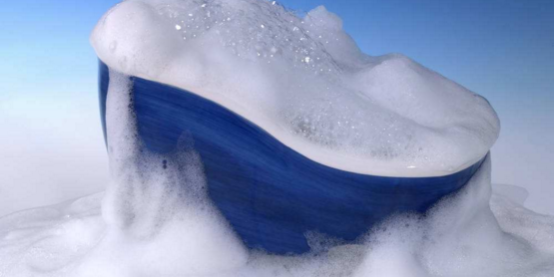Some understandings of the use process of defoaming agents
The most important “flavoring” ingredient in the emulsion polymerization process is defoaming agent. Is there a brand of defoaming agent that can fully achieve the 100% best ideal effect desired by the polymerizer and solve the problem of emulsion technology in various industries? Regarding the problem of dynamic and static defoaming during use, Ajizhijing has repeatedly compared and tested samples from many manufacturers and various brands: no defoaming agent is omnipotent, and each defoaming agent has certain scope of application.
●Therefore, choosing a good defoaming agent is the key to solving the defoaming problem.
Since emulsion defoamer is a thermodynamically unstable system, when the defoamer is added to the foaming liquid or other aqueous system, it will be affected by chemicals;
● Generally speaking, the defoaming and foam-suppressing effect of defoaming agents is directly proportional to the dosage, but there is also a saturation point, that is, after reaching a certain concentration, adding more dosage will not extend the foam suppression time. Therefore, excessive use is a waste. The appropriate concentration is the key to ensuring that you meet your defoaming requirements, and it is also the key to the most economical use of defoaming agents;
● The defoaming and foam-suppressing effect of defoaming agents gradually weakens and disappears over time. However, a good defoamer suppresses foam for much longer than a poor defoamer. Therefore, evaluating the quality of a defoamer depends not only on the initial defoaming ability, but also on the length of the foam suppression time. Long foam suppression time is the most difficult quality of a defoamer, and it is the decisive factor in the defoaming performance and price ratio. It is at this point that a good defoamer far exceeds a poor defoamer;
●There is no relationship between the viscosity and concentration of the defoaming agent. A high concentration (solids content) defoamer may have a very low viscosity, while a high viscosity defoamer may have a very low concentration. But it is precisely the low-viscosity and high-concentration defoaming agent that requires a high level of manufacturing technology. Therefore, users cannot judge the quality of a defoaming agent simply based on its apparent viscosity, otherwise it is easy to draw wrong conclusions, which will affect your production;
● It is meaningless to compare the concentrations of different types of defoaming agents from different manufacturers. A high-concentration (solid content) defoaming agent may have poor foam-inhibiting properties, while a low-concentration defoaming agent may have excellent anti-foaming and inhibiting properties;
● The quality of defoaming agents can only be judged through comparative tests of defoaming and antifoaming properties;
●Although we have various testing methods and rich defoaming experience at this stage, we still need to pay attention to our foaming liquid, detailed foaming reasons, temperature, PH value and other related information as well as defoaming requirements so that we can It is better to choose defoamer to solve the problem.







